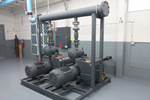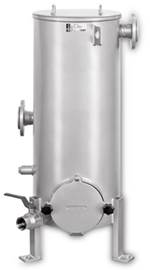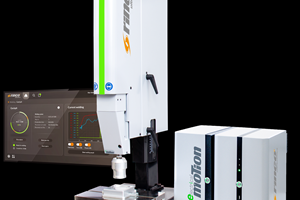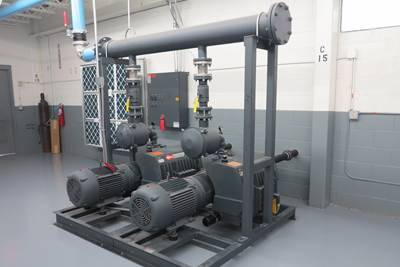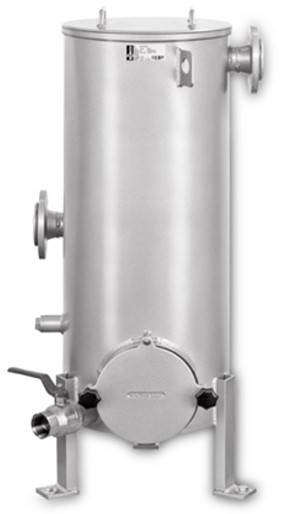Vacuum Technology Helps Thermoformer Hold Parts Precisely During Bonding
With Busch’s mobile claw vacuum pump, thermoformer Ernst Hombach found bonding parts extremely flexible, effective, and efficient.
Germany’s , a pioneer of twin-sheet thermoforming, believes it has found a superior solution for holding plastic parts during bonding. Since September 2020, the company has been using a mobile Mink MV claw vacuum pump from Busch Vacuum Solutions to precisely fix various plastic parts in clamping and holding devices so that they can be joined by bonding.
The vacuum pump is mounted on a vacuum vessel to form a compact and mobile unit that can be easily moved to different workstations. It is frequency controlled, so it delivers the required output based on demand, regardless of whether one or three parts are fixed on the holding devices. This makes bonding parts extremely flexible, effective, and efficient. According to managing director Timo Tobolla, this new vacuum technology has gradually replaced the older approach in all of its thermoforming operations.
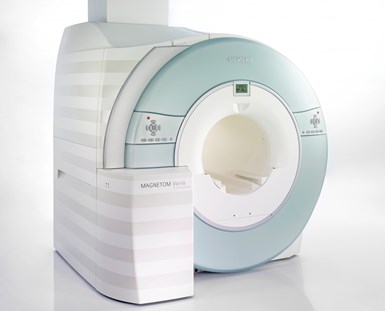
Parts for the housing on MRI devices are thermoformed at Hombach using the twin-sheet process and then assembled into finished components.
With 130 employees, Ernst Hombach operates 10 thermoforming machines to make products ranging from individual parts to prefabricated mass-produced components for medical technology, railway vehicles and many other industries.
Hombach offers services from design to mold construction, prototyping and production thermoforming, plus further processing such as pre-assembly and finishing.
Founded in 1947, the company initially manufactured lampshades, but in the 1960s it became involved in vacuum forming and was among those that revolutionized this process with the development of closed-chamber twin-sheet forming. This process allows forming two sheets simultaneously with upper and lower molds, allowing hollow bodies to be produced in a single operation.
Formed parts are bonded in a separate production plant. In this process, the individual parts are fixed in a precision holding device under vacuum and bonded to other components. In the past, an oil-lubricated vacuum pump was used, which was placed on a pallet at the respective workstations and a maximum of two holding devices could be connected at any one time. The disadvantage of this solution was that this system was not very flexible. What's more, the vacuum pump always ran at full speed so it had unnecessarily high power consumption, along with being relatively loud, which was annoying when operating directly at the workstations.
Busch offered Hombach a solution precisely tailored to its needs. The Mink MV claw vacuum pump does not require oil as an operating fluid and works completely dry and contact-free. This makes it nearly maintenance-free: no oil or filter changes, no wearing parts. The Mink MV comes standard with frequency control, so the pump can be programmed to set a specific vacuum level necessary to hold the parts. The vacuum pump adapts its performance to the job requirements. For example, if the necessary vacuum is applied to a holding device, the pump reduces its rotational speed until it comes to a standstill. If a second holding device is connected, vacuum is immediately applied there from the buffer in the vacuum vessel. If the pressure in the vacuum vessel rises above the programmed level, the vacuum pump automatically starts up again.
Tobolla sees the main advantage of this solution in using considerably less energy and that, instead of two holding devices, three can now be operated simultaneously under vacuum. Furthermore, the regular maintenance work and associated costs are no longer necessary. He adds, “What's more, the new vacuum pump is quieter than the vacuum pump used previously.”
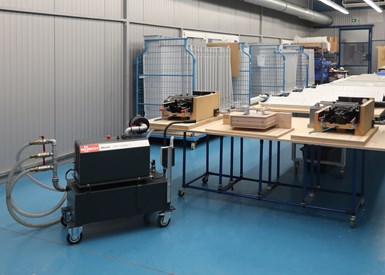
The Mink MV claw vacuum pump is a mobile unit with a vacuum vessel, used here on three holding devices for bonding plastic parts.
Related Content
Next-Generation Fully Electric Ultrasonic Welding System
NPE 2024: Rinco new eMotion servo-driven machine is available in 20 kHZ and 35 kHz frequencies.
Read MoreInline Measurement Adds Module for Inspection of High-Gloss Vehicle Trims
Pixargus’ Shiny Detection module casts a pattern of structured light onto the high-gloss surfaces of the profiles to be inspected.
Read MoreCobot Automates Label Reel Loading for High-Volume PET Beverage Bottles
Sidel’s new CoboREEL system uses a cobot to automate a shift’s worth of label reel loading.
Read MorePolyfuze Graphics Corp. Partners With RFID Specialists
To help customers navigate the complexities of RFID technology, Polyfuze has partnered with such companies as HID Global.
Read MoreRead Next
Switch to Centralized Vacuum Supply Saves Molder Energy, Boosts Production
Less maintenance means more time for processing, thanks to elimination of vacuum pumps at each press.
Read MoreExtruder Degassing: Is a Central System Right for You?
Centralization vacuum pumps have been used for many decades, most widely used in packaging. For extruder degassing the technology can be useful when several production lines are operated in parallel
Read MoreSee Recyclers Close the Loop on Trade Show Production Scrap at NPE2024
A collaboration between show organizer PLASTICS, recycler CPR and size reduction experts WEIMA and Conair recovered and recycled all production scrap at NPE2024.
Read More
